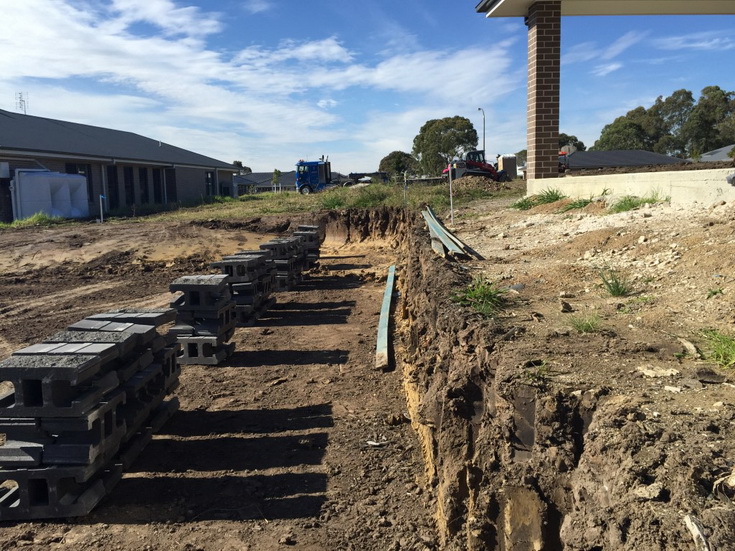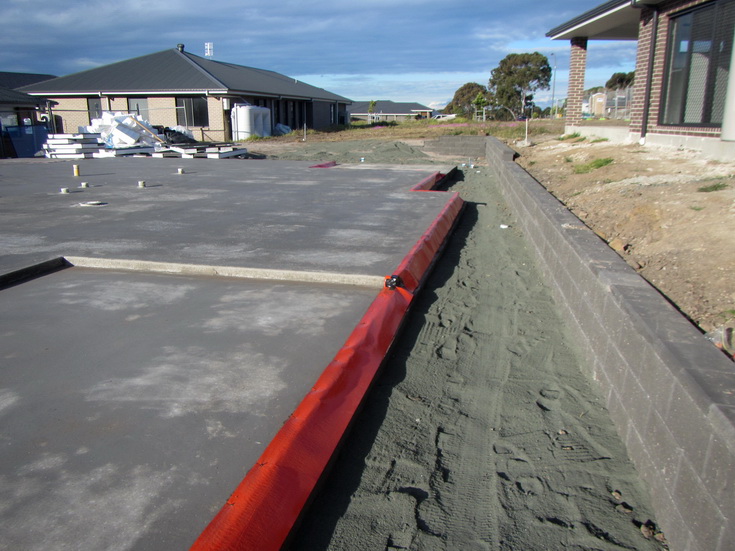One of the first things Property Bloom looks at when starting our design work on a development project is not the style of dwellings we'll build or what materials we'll use...it's something a lot less glamorous but vitally important.
We look at how to maximise the site area. As part of this, the boring old retaining wall comes into play.

When we assess a site we need to consider if the site will need retaining - most do - even the sites will very little fall will need some retaining after the site is cut - so we need to think about where the retaining walls will be built and the costs associated with building them.
In a perfect world, it would be great to build a retaining wall right on the boundary and share the cost with your neighbour (if their site needs retaining too). In new land estates we can easily negotiate this with our neighbours, however we need to consider more than getting the best result for both our clients and their neighbours.
We need to check with our local council to see if they have specific requirements around retaining walls. One council we work with insists retaining walls, footings and their associated drainage be located wholly within the subject property boundaries by a whole whopping metre. This can take up valuable space, but at least we know what we have to do. Other council's are not so clear and it's here we like to try and push the boundaries so to speak, to use all space to our advantage.
If a retaining wall is built on a shared boundary, council may request an easement be set up. This is not such a big deal but something that needs to be considered. Our surveyor is our go to guy in these situations.
We look at the style of retaining wall to use. If we are on a strict budget, then we'll go with timber retaining walls. If we are tight on space and want a nicer finish, then we'll use concrete block retaining which can be purchased in different colours and doesn't need as much width as a timber retaining wall.
Of course, if you need to build a high retaining wall, generally over one meter, then it may need to be engineered. This means an engineer needs to design the wall and you'll have to submit the plans as part of your Development Application.
The best time to build a retaining wall is after the site is cut but before the slabs are laid. This gives the contractors the best access and means this work is taken care of early in the build phase.

I recently had a dispute with someone about whose responsibility it was to pay for an upgrade to a retaining wall. It can be a grey area. In this case, there was an existing, old retaining wall situated wholly inside this person's side boundary. They had knocked down the original cottage and built a new house and their land levels had changed as a result. The properties were on a hill. Many years ago, their back yard had been retained and filled so it was level. The house on the lower side had been built to the natural contours of the land and their back yard fell to the rear.
After the people on the high side finished their new house build, the old retaining wall needed upgrading as it was made of stone blocks and their soil filtered through each time it rained, plus the existing wall was not high enough now works had been completed. In addition, there was more retaining required to the entire side boundary due to the change of levels during construction.
The responsibility for the erection of retaining walls rests with the person who excavates or fills their land. It is not up to an adjoining landowner to contribute to the costs of a retaining wall, unless the wall is a common wall to support both cut and fill, for the benefit of both properties, on the common boundary.
To me this was cut and dry - their yard had been retained and filled at some stage (before these owners). They argued that the lower property had at one stage been cut (it hadn't but how do you prove this?). The situation ended in a difference of opinions and a compromise was made by one party. It could have got ugly but at the end of the day, the additional cost was $500 and we put it down to an investment in future neighbour relations and hoped the neighbour appreciated this.
Works on common boundaries can be tricky business and communication is key but at the end of the day, if your development is going to benefit from a particular style or position of a retaining wall, then it may be easier to include it in the costs of the project and move on, after all the time saved on negotiating disputes can be put to better use.

